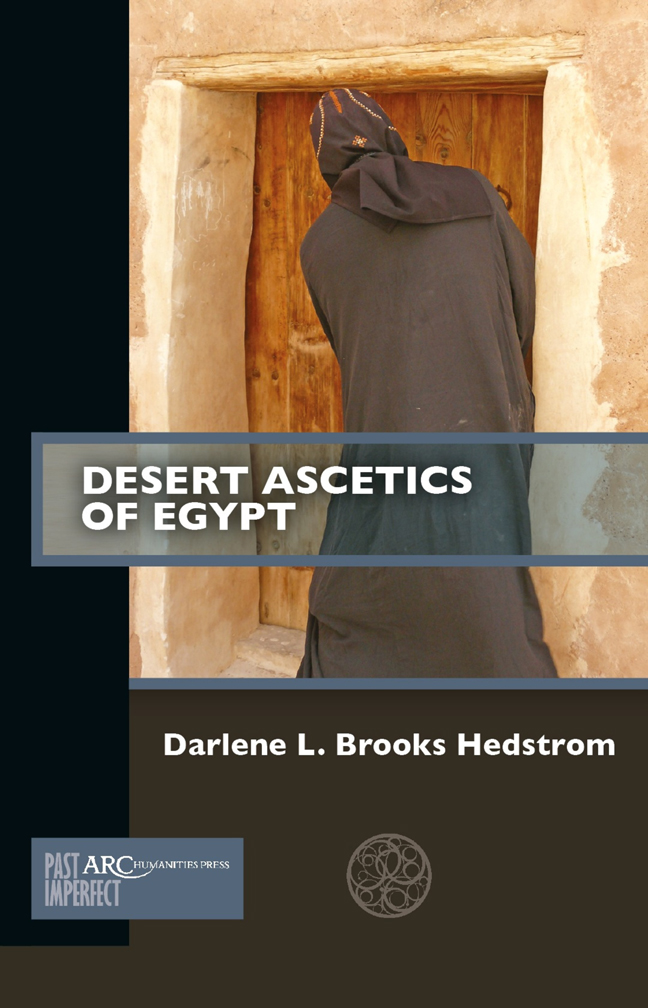Book contents
- Frontmatter
- Contents
- List of Illustrations
- Introduction: Travelling into the Desert
- Chapter 1 Desert Ascetics as Early Christian Celebrities
- Chapter 2 What Did the Desert Ascetics Teach and How Did They Live?
- Chapter 3 Who Was the First Desert Ascetic?
- Chapter 4 Monastic Literature, Letters, and Desert Ascetics
- Chapter 5 Archaeology of Early Egyptian Monasticism
- Chapter 6 Archaeology of Monastic Places
- Chapter 7 Monastic Archaeology and Monastic Things
- Conclusion: Reassembling a History of the Desert Ascetics of Egypt
- Further Reading
Chapter 5 - Archaeology of Early Egyptian Monasticism
Published online by Cambridge University Press: 20 February 2024
- Frontmatter
- Contents
- List of Illustrations
- Introduction: Travelling into the Desert
- Chapter 1 Desert Ascetics as Early Christian Celebrities
- Chapter 2 What Did the Desert Ascetics Teach and How Did They Live?
- Chapter 3 Who Was the First Desert Ascetic?
- Chapter 4 Monastic Literature, Letters, and Desert Ascetics
- Chapter 5 Archaeology of Early Egyptian Monasticism
- Chapter 6 Archaeology of Monastic Places
- Chapter 7 Monastic Archaeology and Monastic Things
- Conclusion: Reassembling a History of the Desert Ascetics of Egypt
- Further Reading
Summary
Egypt is a land known for its massive stone temples and tombs. Inspired by tales from the Greek historian Herodotus and the Latin historian Cassius Dio, ancient people travelled to Egypt to see the great pyramids of Giza, to enter elaborately painted tombs in Western Thebes, and to record their names on the walls of numerous Egyptian temples. More modern travellers were drawn to Egypt for the same reasons, and their names are often found carved into the same surfaces as their Greek and Roman predecessors. Egypt’s antiquity was a cultural prize that other nations wished to claim, primarily through collecting artifacts and remains of mummified people and animals.
The route by which artifacts and human remains moved out of Egypt is complex. Many of Egypt’s greatest artifacts are found in national museums in America, England, France, and Germany, such as the famous bust of Nefertiti, the Rosetta Stone, and the bust of Prince Ankhhaf. The decipherment of ancient Egyptian in the early nineteenth century by Jean-François Champollion fuelled the desire for ancient Egyptian antiquities. This fascination extended into popular culture when Americans and Europeans (among others) created what Scott Trafton calls the “overlapping iconographies of Orientalism and Egyptomania,” in which everything from cosmetics to cigarettes to furniture was designed to look Egyptian. These products, in addition to increasing travel to Egypt, highlighted the importance of Egypt’s pharaonic past. However, this fascination with Egypt did not include fascination with its Christian and Islamic past. In this chapter, I describe the fate of the archaeological remains of Egyptian monasticism amid the broader context of scholarly interest in ancient Egypt. I also explore how archaeology’s evolution as a field provides fresh opportunities to rediscover the over-looked landscape of desert asceticism.
Disregarding Monastic Remains
Late antique paintings of Christian saints are still visible on columns of the colonnade of Pharaoh Thutmose III (r. 1479–1425 bce) at Karnak. Visitors to Egypt can also find Greek and Coptic graffiti inscribed and Christian images painted on the walls of many pharaonic temples and tombs. These are all clues to the Christian and monastic reuse of older monuments. In the nineteenth century, this evidence of Christian presence was regarded as a sign of violent occupation and destruction of the pagan past by zealots.
- Type
- Chapter
- Information
- Desert Ascetics of Egypt , pp. 79 - 94Publisher: Amsterdam University PressPrint publication year: 2023

